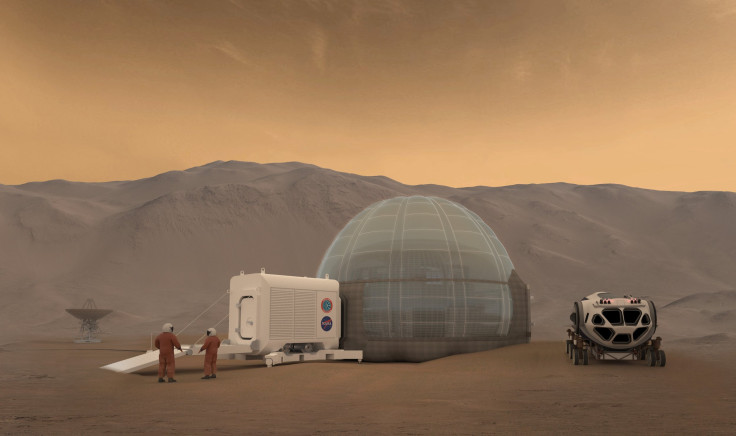Mars Ice Home: First Humans On The Red Planet May Live In Igloos Made Of Martian Water-Ice

Will the first humans on Mars live in an igloo-like structure made of ice? If researchers at NASA’s Langley Research Center in Hampton, Virginia, are to be believed, it’s entirely possible.
On Thursday, a team of engineers, designers and architects announced that they had finalized the design for a Martian “Ice Home” — one of the many concepts for sustainable human habitats on the red planet. Researchers from the companies Space Exploration Architecture and the Clouds Architecture Office, which won the first prize in NASA’s 2015 Centennial Challenge for their “Mars Ice House” design, were also involved in the design session.
The Ice Home is basically a large inflatable torus surrounded by a shell of water-ice extracted from just below the Martian surface. A layer of carbon dioxide — extracted from Mars’ atmosphere — would serve as a layer of insulation for astronauts living in the habitat.
Mars’ Utopia Planitia region, located in the mid-northern latitudes, is believed to contain — in the form of buried ice — roughly as much water as Lake Superior, which is the largest of the Great Lakes. Proponents of the Ice Home design argue that by incorporating this water into the structure, the weight of material to be launched from Earth would be drastically reduced, thereby making crewed missions to Mars more cost-effective and feasible than they are currently estimated to be.
“It is lightweight and can be transported and deployed with simple robotics, then filled with water before the crew arrives. It incorporates materials extracted from Mars, and because water in the Ice Home could potentially be converted to rocket fuel for the Mars Ascent Vehicle, the structure itself doubles as a storage tank that can be refilled for the next crew,” NASA said in a statement released Thursday.
In addition, the water-ice would also serve as an excellent shielding material from galactic cosmic rays, which are perhaps the biggest risk a long-duration surface mission on Mars is likely to face.
“All of the materials we’ve selected are translucent, so some outside daylight can pass through and make it feel like you’re in a home and not a cave,” Kevin Kempton, a scientist at NASA’s Langley Research Center, said in the statement. “After months of travel in space, when you first arrive at Mars and your new home is ready for you to move in, it will be a great day.”
© Copyright IBTimes 2024. All rights reserved.






















